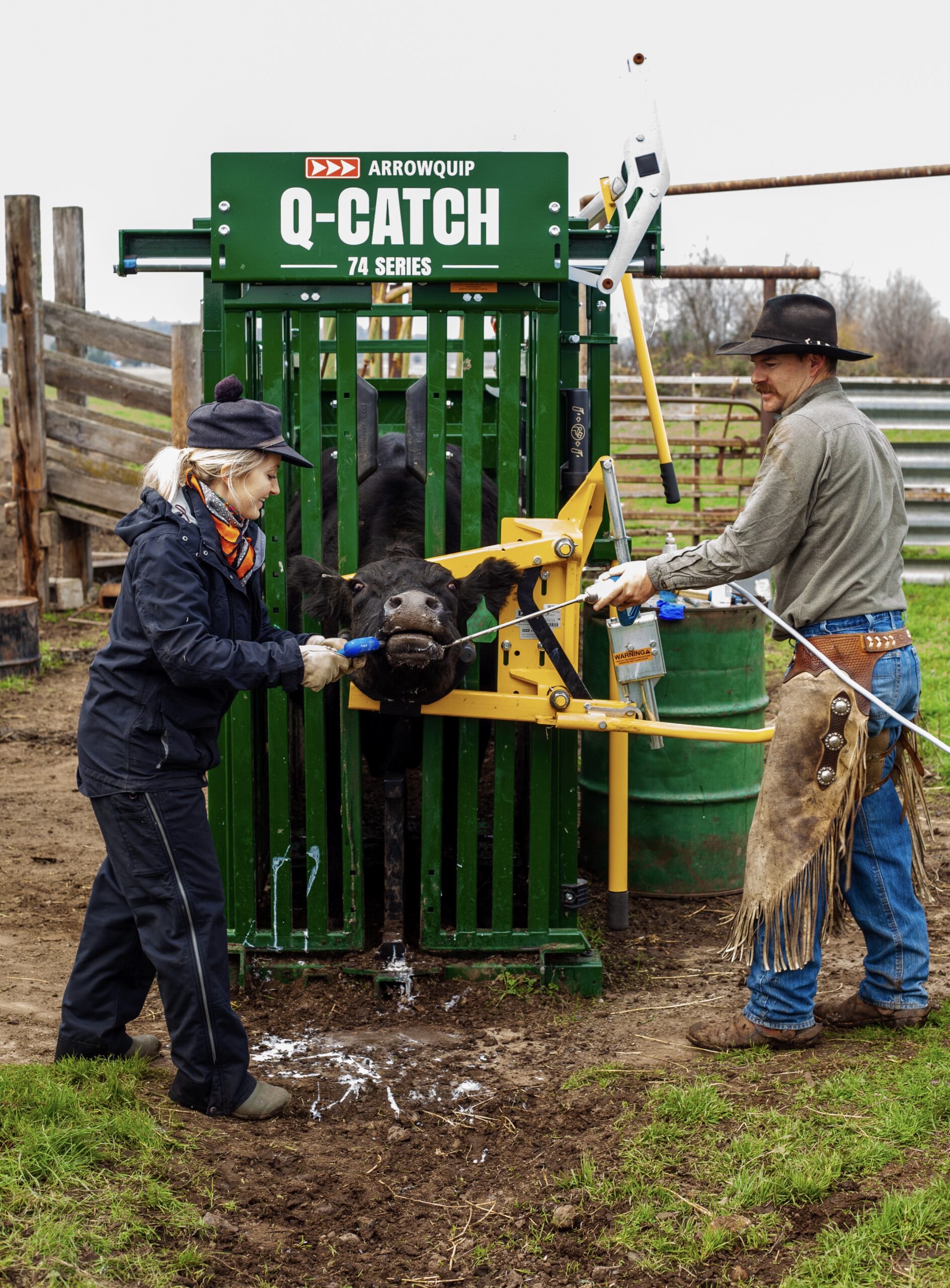
Beef Cattle Trace Mineral Supplements
Why have a strong Trace Mineral Program?
Our local vet says, “Prevention is Production,” and if you agree with that, you probably are already on top of your trace mineral supplementation. If you are not, let’s discuss the many tools that we have in our toolbox as beef cattle producers to bring trace mineral levels to a state of sufficiency. Cobalt, copper, iodine, iron, manganese, selenium and zinc are trace minerals vital for good cattle nutrition. Of these, copper and selenium seem to impact us most in the West.

Why is selenium so important?
Deficiencies in selenium can lead to abortions, retained placentas, infertility, White Muscle Disease, poor immune system function, and more. Perhaps there isn’t a glaring issue in your herd. You may chalk up the open cows to that bull that went lame on you. Feel free to fill in the blank with your circumstance. Staying on top of your trace mineral program will lead to better health. Better health will lead to more bred cows, more calves on the ground and more pounds on the scale. Alltech has even done research on the impact of trace minerals levels in our proteins and the positive impact it can have on human health as well plant and soil health. They consider it agriculture’s secret weapon for food security.
Five Ways to Supplement Trace Minerals
There are FIVE tools that can be used to increase trace mineral levels in cattle:
- Salt and Mineral Mix – These mixes are not labor intensive and are relatively inexpensive compared to other options. A downfall is the variability that can take place at plants when mixing. Also, some products don’t hold up very well in harsh weather or moisture. Also, depending on the temperament of the animal, they may not get as much or any at all.
- Molasses Licks – Whether you get tubs or have a tank, it is an economical option. The tubs are easy to store and weather resistant. There are a lot of different options to fit the needs of your area too. Either option allows cattle to self-moderate their consumption. Similar to the salt and mineral mixes, there can be a lot of variability at the plants that mix the formulas.
- Injectables – There are many different injectable products on the market, BO-SE, MU-SE, and MultiMin to mention a few. When pricing MultiMin, it is about $3.00/head on a 1200 lb. cow. I’ve heard from a veterinarian that 25% of the minerals in an injectable exit the cow in the first 48 hours in their urine. Data also shows that the cow is back to baseline by day 28. Would I stop using MultiMin? Absolutely not, we find it to be an effective pre-breeding tool. If you are able to time it just right before you put your bulls in it gives them an extra boost. The same is true for the calves. When we work calves about two weeks prior to branding, they get a dose of MultiMin. This helps give them a boost for the stress of branding. If you are a large outfit, this may not be feasible. Injectables are a tool that still hold a lot of value in treating White Muscle Disease and giving cattle a boost during key times of breeding or stress.
- Fertilizers – This spring Oregon State University came to speak to our cattlemen’s group about applying selenium to pastures and mixing it into fertilizer. They discussed a Selenate spray that can be applied through a boom sprayer and Selcote that is a granular application. It was mentioned that Selcote seems to remain more consistent after multiple cuttings and potentially will carryover to the next growing season. They found this to be a very effective and affordable tool, but there are some mixed reviews on this method. For operations that don’t put up their own hay or ship cattle to pasture in the winter months, this isn’t going to be a feasible option. When I listened in on a recent, virtual Alltech Conference they discussed the value to your pastures in applying selenium, that it can decrease the negative effects of soil pH on plant growth, support plants’ tolerance to stressors and even, potentially, increase the plant’s production. The plant is able to convert the selenium into a bioavailable form that humans and animals can benefit from. Using this method, you would likely not use many, if any of the other tools listed here due to the chance of toxicity.
- Boluses – There are selenium and copper boluses on the market today. They are a fantastic tool for producers who run on public lands as they release slowly over time. The price per bolus is about $4 a head. There are bulk discounts available that could get you down in the $3.60 per bolus range. Pacific Trace Minerals has also developed a heavy duty balling gun that I highly recommend. It will fit a copper and selenium bolus at once. If your cattle happen to be deficient in both, you are able to give them simultaneously, which is helpful when you are working a large bunch of cows. The unfortunate thing is at this time, Pacific Trace Minerals is only available for “purchase and use in California” although the company is located in Ashland, Oregon.
You may be thinking, “She forgot one option, mineral blocks.” I promise I didn’t forget, they just aren’t an option to consider. The minerals go out the bottom before the cattle get to it.

Know if You Are in the Ballpark
One thing that a majority of outfits forget to do is test their cattle to establish a baseline. Even more forget to test 3-5 years later after implementing the program to see the impact it made. Before you change anything about your trace mineral program, consider blood testing 5-7 animals out of a bunch that is managed the same. You don’t need to test 10% of your herd to know if you are in the ballpark or not. Once you have this information you can work with your veterinarian to formulate a plan that fits the unique needs of your operation.
Trace Minerals Impacting Soil Health and Humans
Whether you are seeing the impact of deficiencies at this time or not, revisit your trace mineral program. You can blood test 5-7 head to just see where they are at. Remember, prevention is production. I know a lot of guys view trace minerals as an extra expense and one that you can skimp on. Unfortunately, it is only a matter of when rather than if they’ll see the impacts of trace mineral deficiencies. Recently, research on feeding optimal levels of trace minerals to cattle has been done. They are seeing the positive impact it has on the human population consuming that beef. Low levels of selenium can cause fertility problems, thyroid issues and negatively impact cardiovascular health. It isn’t just the cattle that these minerals will positively impact.
Take Action
You may be reading or hearing about trace minerals every time you turn around. Although, I’ve heard that a person needs to hear a message seven times before they take action. When was the last time you chatted about your program with your veterinarian? Have you ever done any blood testing to see if you are in the ballpark? Whether you are a large or small operation, I hope you will take the time this summer to see what your trace mineral program is truly doing for your cattle.